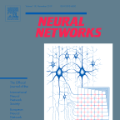Graph Neural Networks (GNNs) have become fundamental in semi-supervised learning for graph representation, leveraging their ability to capture complex node relationships. A recent trend in GNN research focuses on \textbf{adaptive k-hop structure learning}, moving beyond fixed-hop aggregation to more flexible and dynamic neighborhood selection. While GAMLP \cite{Zhang_2022} employs separate MLP layers for each k-hop domain and ImprovingTE \cite{Yao2023ImprovingTE} enhances this by injecting contextualized substructure information, these methods still rely heavily on predefined sampling strategies, which may limit their ability to generalize and maintain stable accuracy. To address these limitations, we propose an \textbf{adaptive reconstruction framework} that dynamically refines k-hop structure learning. Inspired by "coreset selection" \cite{guo2022deepcore}, our approach adaptively \textbf{reconstructs} node neighborhoods to optimize message passing, ensuring more \textbf{effective and context-aware information flow} across the graph. To further enhance structural robustness, we introduce two key modules: the \textbf{Distance Recomputator} and the \textbf{Topology Reconstructor} (\textcolor{blue}{DRTR}). The Distance Recomputator \textbf{reassesses and recalibrates} node distances based on adaptive graph properties, leading to \textbf{improved node embeddings} that better reflect latent relationships. Meanwhile, the Topology Reconstructor \textbf{dynamically refines local graph structures}, enabling the model to \textbf{adapt to evolving graph topologies} and mitigate the impact of noise and mislabeled data. Empirical evaluations demonstrate that our \textbf{adaptive reconstruction framework} achieves \textbf{significant improvements} over existing k-hop-based models, providing more \textbf{stable and accurate} performance in various graph learning benchmarks.
翻译:暂无翻译



